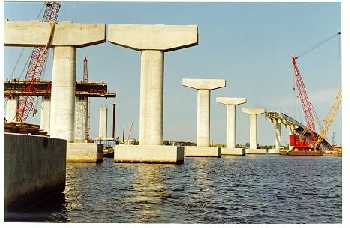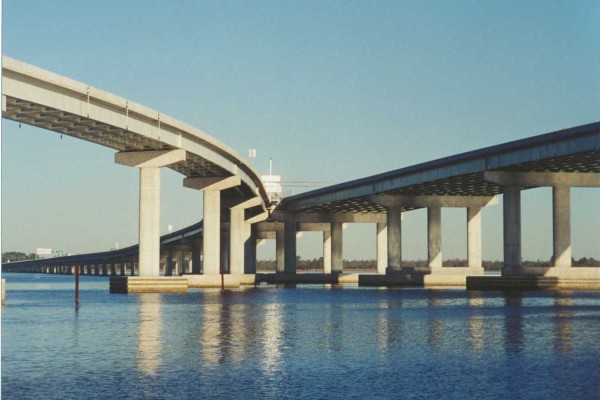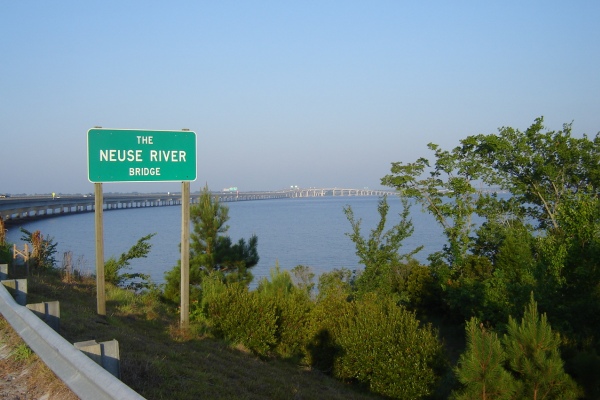Neuse River Bridge
Opened to traffic in November 1999, the US17/NC55 crossing of the Trent and Neuse Rivers was North Carolina's largest single-contract highway project to-date. The intricate system of roadway, ramps and bridges provides a highway functional by pass of historic New Bern. The work was accomplished with special consideration to numerous environmental, social and historic issues.
The bridge in place prior to construction of this project was a narrow 2-lane, mile-long trestle bridge with a swing span at the main channel, comprised of steel beams and timber pile bents. The bridge was in serious disrepair, and use of the swing-span caused traffic delays during the tourist season.
Roadway and bridge conceptual plans for the New Bern Bypass were finalized in 1992. In late 1993, a project team, led by Ralph Whitehead & Associates (RWA) was selected to prepare construction documents for the Neuse River crossing. The team led by RWA (also composed of DSAtlantic (Stantec), JMI Engineers, HNTB, Parsons Brinkerhoff, Barbara Mulkey Engineering, S&ME, and Nallmala-Hall-Wilson) completed roadway plans, bridge type studies, vessel collision analysis, plans for aircraft warning lighting system, signing, US Army Corps of Engineers permitting, load testing and hurricane storm surge modeling producing construction plans in May 1995. The final design included eleven (11) bridges.
The 260' main channel span girder placements utilized the combined efforts of two 200-ton cranes, one 350-ton "ringer" crane and one 100-ton assist crane, all barge-mounted and all in tandem.
Bridge foundation work consisted of driving more than 1000 piles and installing more than 800 drilled shafts, utilizing steel casing and bentonite slurry for excavation support. The drilled shafts averaged 100' in length, 25' of which was rock-socketed. A sluggered schedule for footing/column/cap contruction resulted in the completion of all brdige bents or piers by summer 1998.
Fit-up was potential concern in light of the complex geometry for the fabrication fo the629 steel girders and more than 2000 diaphragms/cross-frames.
During construction, the New Bern area was battered by hurricanes Bertha, Bonnie, Fran, Dennis and Floyd the latter of which passed directly over the site on September 16, 1999. Nonetheless, construction was completed approximately three months ahead of schedule.
Project Statistics:
49,000,000 pounds of steel
200,000 cubic yards reinforced concrete
221,000 feet (40 miles) pilings/drilled shaft/piers
8 miles bridge railing
40,000 feet AASHTO precast girders




